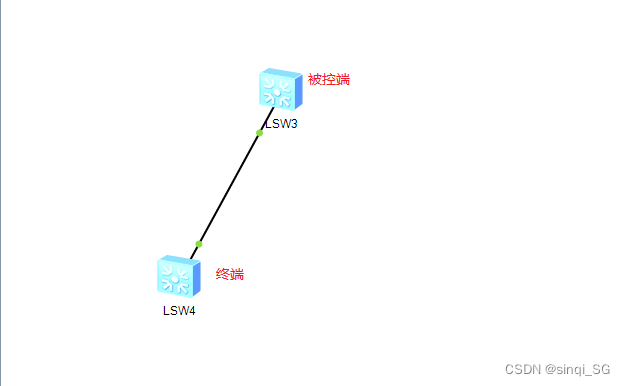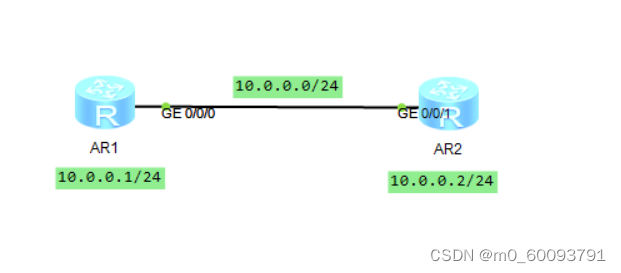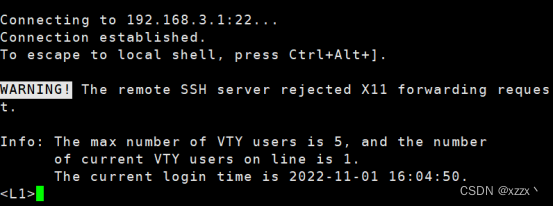目录
1.MVC(Model-View-Controller)模式
1.1示例一:
1.2示例2:
2.ECS (Entity-Component-System)模式
2.1示例1:
2.2示例二:
3.MVVM(Model-View-ViewModel)模式:
1.MVC(Model-View-Controller)模式
1.1示例一:
// Model (数据模型)
public class PlayerModel
{public int Score { get; set; }// 其他游戏相关的属性
}// View (视图)
public class PlayerView : MonoBehaviour
{public Text scoreText;public void UpdateScore(int score){scoreText.text = score.ToString();}// 其他视图更新的方法
}// Controller (控制器)
public class PlayerController : MonoBehaviour
{private PlayerModel model;private PlayerView view;private void Start(){model = new PlayerModel();view = GetComponent<PlayerView>();}private void Update(){// 处理玩家输入等逻辑}private void IncreaseScore(int amount){model.Score += amount;view.UpdateScore(model.Score);}// 其他控制器逻辑
}
这是一个简单的示例,展示了使用MVC模式在Unity中实现游戏前端架构的方式。PlayerModel代表游戏的数据模型,PlayerView是相应的视图,PlayerController负责处理逻辑和更新模型与视图。在这个示例中,PlayerController可以处理玩家的输入、更新分数等操作,并通过PlayerView来更新分数的显示。
1.2示例2:
// 游戏模型
public class GameModel
{// 模型的数据private int score;public int Score{get { return score; }set { score = value; }}// 模型的行为public void IncrementScore(int amount){score += amount;}
}// 游戏视图
public class GameView : MonoBehaviour
{// 引用控制器private GameController gameController;// 在界面上显示分数public void UpdateScore(int score){// 更新分数显示逻辑}// 处理用户输入private void HandleInput(){// 处理用户输入逻辑}// 游戏开始的初始化public void Initialize(GameController controller){gameController = controller;// 进行其他初始化逻辑}
}// 游戏控制器
public class GameController : MonoBehaviour
{// 引用模型和视图private GameModel gameModel;private GameView gameView;private void Start(){gameModel = new GameModel();gameView = GetComponent<GameView>();gameView.Initialize(this);}private void Update(){// 更新游戏逻辑}// 控制器的行为public void IncrementScore(int amount){gameModel.IncrementScore(amount);gameView.UpdateScore(gameModel.Score);}
}// 游戏入口
public class GameEntryPoint : MonoBehaviour
{private void Start(){// 创建游戏控制器GameObject gameControllerObject = new GameObject("GameController");gameControllerObject.AddComponent<GameController>();}
}
2.ECS (Entity-Component-System)模式
ECS模式是Unity引擎中的一种新型架构模式,通过实体(Entity)、组件(Component)和系统(System)来构建游戏逻辑。
2.1示例1:
using Unity.Entities;
using Unity.Transforms;
using Unity.Rendering;
using UnityEngine;public class GameManager : MonoBehaviour
{private EntityManager entityManager;private EntityArchetype entityArchetype;private MeshInstanceRenderer meshInstanceRenderer;private void Start(){entityManager = World.DefaultGameObjectInjectionWorld.EntityManager;entityArchetype = entityManager.CreateArchetype(typeof(Translation),typeof(RenderMesh),typeof(LocalToWorld));GameObject cubePrefab = GameObject.CreatePrimitive(PrimitiveType.Cube);meshInstanceRenderer = new MeshInstanceRenderer{mesh = cubePrefab.GetComponent<MeshFilter>().sharedMesh,material = cubePrefab.GetComponent<MeshRenderer>().sharedMaterial};Destroy(cubePrefab);SpawnCube(new Vector3(0f, 0f, 0f));SpawnCube(new Vector3(2f, 0f, 0f));SpawnCube(new Vector3(4f, 0f, 0f));}private void SpawnCube(Vector3 position){Entity cubeEntity = entityManager.CreateEntity(entityArchetype);entityManager.SetComponentData(cubeEntity, new Translation { Value = position });entityManager.SetSharedComponentData(cubeEntity, meshInstanceRenderer);}
}
这个示例中,我们使用了Unity.Entities命名空间中的类和结构来实现ECS架构。GameManager类是一个MonoBehaviour,在游戏开始时创建了一个实体原型(entityArchetype)和一个网格渲染器(meshInstanceRenderer)。SpawnCube方法用于在指定位置生成一个立方体实体,并设置其位置和渲染器。
2.2示例二:
// 游戏组件
public class ScoreComponent : MonoBehaviour
{public int score;
}// 游戏系统
public class ScoreSystem : MonoBehaviour
{private void Update(){// 更新游戏逻辑// 通过查询拥有ScoreComponent组件的实体,并对其进行处理}
}// 游戏入口
public class GameEntryPoint : MonoBehaviour
{private void Start(){// 创建游戏系统GameObject scoreSystemObject = new GameObject("ScoreSystem");scoreSystemObject.AddComponent<ScoreSystem>();}
}
在ECS模式中,游戏逻辑通过组件来描述实体的属性,而系统负责处理这些实体和组件,以实现游戏的行为和逻辑。
3.MVVM(Model-View-ViewModel)模式:
// 游戏模型
public class GameModel
{// 模型的数据private int score;public int Score{get { return score; }set { score = value; }}// 模型的行为public void IncrementScore(int amount){score += amount;}
}// 游戏视图
public class GameView : MonoBehaviour
{// 引用视图模型private GameViewModel gameViewModel;// 在界面上显示分数public void UpdateScore(int score){// 更新分数显示逻辑}// 处理用户输入private void HandleInput(){// 处理用户输入逻辑}// 游戏开始的初始化public void Initialize(GameViewModel viewModel){gameViewModel = viewModel;// 进行其他初始化逻辑}
}// 游戏视图模型
public class GameViewModel
{// 引用模型private GameModel gameModel;public GameViewModel(GameModel model){gameModel = model;}// 更新分数public void UpdateScore(int amount){gameModel.IncrementScore(amount);}
}// 游戏控制器
public class GameController : MonoBehaviour
{// 引用模型、视图和视图模型private GameModel gameModel;private GameView gameView;private GameViewModel gameViewModel;private void Start(){gameModel = new GameModel();gameViewModel = new GameViewModel(gameModel);gameView = GetComponent<GameView>();gameView.Initialize(gameViewModel);}private void Update(){// 更新游戏逻辑}
}
这种模式中,引入了视图模型(GameViewModel)作为视图(GameView)与模型(GameModel)之间的桥梁。视图模型负责将模型的数据转换为视图可以理解和显示的格式,并且接受视图的用户输入,并将其转发给模型进行处理。






